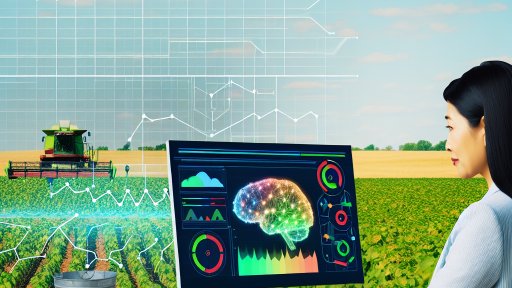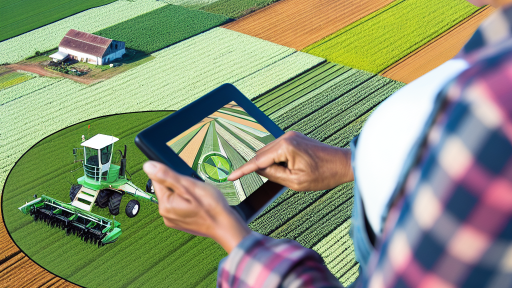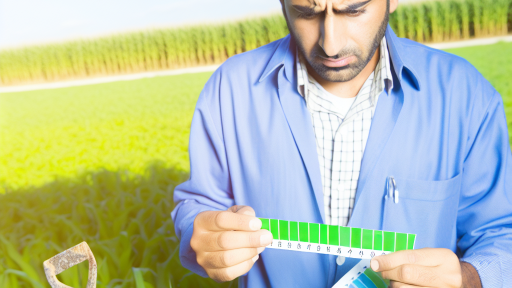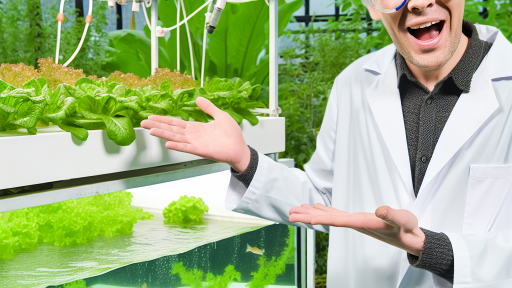Overview of Crop Health Monitoring Systems
Importance of Crop Health Monitoring
Crop health monitoring is essential for sustainable agriculture.
It allows farmers to identify potential issues early.
Regular assessments help in maintaining optimal crop conditions.
This proactive approach minimizes risk and loss.
Benefits of Effective Monitoring Systems
Utilizing advanced monitoring systems increases crop yield.
Farmers can make informed decisions quickly.
These systems promote efficient resource utilization.
Moreover, they reduce the need for chemical inputs.
Technological Advancements
Technological advancements enhance monitoring capabilities.
Remote sensing technologies provide valuable data.
Drones and satellites capture detailed imagery.
This information helps in assessing crop health accurately.
Incorporating Data Analytics
Data analytics transform raw data into actionable insights.
Farmers can analyze trends over time effectively.
Predictive analytics allows for anticipating challenges.
Transform Your Agribusiness
Unlock your farm's potential with expert advice tailored to your needs. Get actionable steps that drive real results.
Get StartedAs a result, interventions can be timed perfectly.
Collaboration and Knowledge Sharing
Collaboration among farmers enhances success rates.
Sharing experiences leads to improved strategies.
Community engagement fosters collective growth.
Furthermore, partnerships with tech companies can yield innovative solutions.
Key Components of Effective Crop Health Monitoring Systems
Data Collection Techniques
Effective crop health monitoring begins with accurate data collection.
Farmers can utilize sensors to gather real-time soil moisture levels.
Moreover, drones can capture aerial images to identify crop stress early.
Integrating satellite imagery enhances understanding of larger areas efficiently.
Collecting data consistently allows for better trend analysis over time.
Analytical Tools
Using analytical tools is crucial for making sense of collected data.
Farmers should leverage machine learning algorithms for predictive analysis.
Data visualization tools help transform complex datasets into understandable formats.
These tools support quicker decision-making, maximizing crop yields.
Monitoring Technologies
Utilizing advanced monitoring technologies enhances crop health assessments.
IoT devices provide continuous monitoring for various environmental factors.
Temperature and humidity sensors can help maintain optimal growing conditions.
Integrating these technologies allows for proactive interventions when necessary.
Reporting Systems
Establishing clear reporting systems improves communication among stakeholders.
Farmers should create easy-to-understand dashboards for visual reports.
Regular updates allow all parties to stay informed about crop health.
Furthermore, incorporating mobile apps increases accessibility for field reporting.
Feedback Mechanisms
Implementing feedback mechanisms fosters continuous improvement in monitoring systems.
Farmers can gather insights from agronomists to refine their practices.
Showcase Your Farming Business
Publish your professional farming services profile on our blog for a one-time fee of $200 and reach a dedicated audience of farmers and agribusiness owners.
Publish Your ProfileAdditionally, surveys can help understand the effectiveness of specific interventions.
Taking feedback into account leads to better resource allocation and planning.
Training and Support
Providing training and support is fundamental for operating monitoring systems.
Workshops and online courses can equip farmers with necessary skills.
Furthermore, ongoing support increases user engagement and system adoption.
Empowered users are more likely to utilize data to improve productivity.
Technological Tools for Crop Health Monitoring
Drones in Agriculture
Drones offer unique capabilities for crop health monitoring.
They provide high-resolution imagery of fields.
Farmers can identify problem areas quickly.
Additionally, drones facilitate multispectral imaging.
This technology helps assess plant health effectively.
Furthermore, drones reduce labor costs significantly.
They can cover large areas in a short time.
Sensors for Real-Time Data Collection
Sensors play a vital role in modern agriculture.
They monitor environmental factors continuously.
Soil moisture sensors keep track of irrigation needs.
Weather sensors gauge temperature and humidity levels.
These tools provide real-time data to farmers.
Using sensors improves decision-making and yields.
Moreover, integrating sensors with IoT enhances efficiency.
Software Solutions for Data Analysis
Software tools enable comprehensive data analysis in agriculture.
Farmers can analyze historical and current data quickly.
Cloud-based platforms offer accessibility from anywhere.
They allow for better tracking of crop performance.
Additionally, software assists in predictive analytics.
This helps farmers anticipate potential issues early.
Furthermore, management software can streamline operations.
Integrating Technologies for Optimal Monitoring
Integrating drones, sensors, and software creates a robust system.
This combination enhances the accuracy of crop health assessments.
Farmers can make informed decisions based on data.
Ultimately, this leads to better crop management strategies.
Innovative solutions promote sustainability in farming.
Together, these technologies pave the way for future advancements.
Gain More Insights: Managing Pests and Diseases with Cover Crops
Data Collection Techniques: Remote Sensing vs. Ground-Based Methods
Overview of Data Collection Techniques
Data collection is vital for effective crop health monitoring.
It involves the use of various techniques and technologies.
Remote sensing and ground-based methods are two primary approaches.
Remote Sensing
Remote sensing utilizes satellite or aerial imagery to gather data.
It offers a broad view of agricultural areas quickly.
This method can analyze crop health over large distances.
Showcase Your Farming Business
Publish your professional farming services profile on our blog for a one-time fee of $200 and reach a dedicated audience of farmers and agribusiness owners.
Publish Your ProfileIt often employs multispectral and hyperspectral imaging techniques.
These technologies detect vegetation indices and crop stress signs.
Consequently, remote sensing provides timely information for farmers.
Advantages of Remote Sensing
Remote sensing methods have several notable benefits.
- They cover vast areas in a short time frame.
- They reduce the need for physical presence in the field.
- They offer repeated measurements for ongoing monitoring.
Limitations of Remote Sensing
Despite its advantages, remote sensing has limitations.
It may not provide detailed information at the plant level.
Additionally, data interpretation often requires specialist knowledge.
Weather conditions can also affect the accuracy of readings.
Ground-Based Methods
Ground-based methods involve direct measurement of crops.
Farmers can utilize techniques like sampling and visual inspections.
This method allows for detailed assessment of plant health.
Soil testing and pest scouting are common ground-based practices.
Consequently, this approach helps in making precise management decisions.
Advantages of Ground-Based Methods
Ground-based techniques provide several important benefits.
- They offer detailed, localized data about crop conditions.
- Farmers can easily customize assessment methods according to needs.
- Personal observation allows for immediate action when issues arise.
Limitations of Ground-Based Methods
Ground-based methods also have their drawbacks.
They can be time-consuming and labor-intensive.
Additionally, they might not provide comprehensive coverage.
Weather and accessibility can further hinder data collection efforts.
Comparative Analysis
Both remote sensing and ground-based methods have unique strengths.
The choice often depends on the specific requirements of the farm.
Using both methods can lead to a comprehensive assessment.
This integrated approach maximizes data accuracy and relevance.
Ultimately, understanding the advantages and limitations helps in selecting the best method.
Gain More Insights: Preventing Soil Degradation with Smart Practices
Integrating AI and Machine Learning in Crop Health Monitoring
Enhancing Data Collection
AI and machine learning transform data collection methods in agriculture.
Remote sensing technologies collect real-time data from fields.
These technologies provide insights into crop health and soil conditions.
Moreover, drones can capture aerial images and monitor crop growth.
Farmers can analyze this data to make informed decisions.
Analyzing Crop Health
Machine learning algorithms help identify patterns in crop health data.
They analyze historical data to predict future crop conditions.
For instance, algorithms can detect signs of disease early.
This early detection allows for timely interventions.
As a result, crop yields can be improved significantly.
Predictive Analytics and Decision Support
Predictive analytics play a crucial role in modern agriculture.
Farmers leverage these tools to anticipate potential issues.
For example, algorithms can forecast pest infestations before they occur.
This proactive approach helps minimize crop damage.
In addition, decision support systems offer targeted recommendations.
These systems suggest optimal planting times and resource allocation.
Showcase Your Farming Business
Publish your professional farming services profile on our blog for a one-time fee of $200 and reach a dedicated audience of farmers and agribusiness owners.
Publish Your ProfileIntegrating IoT for Real-time Insights
The Internet of Things (IoT) complements AI-driven monitoring systems.
Sensors placed in fields collect valuable data continuously.
This data includes moisture levels, temperature, and nutrient availability.
As a result, farmers can monitor conditions instantly.
Moreover, IoT devices can automate irrigation based on real-time data.
Collaboration with Agricultural Experts
Effective monitoring systems require collaboration with experts.
Researchers and agronomists provide insight into crop-specific needs.
Collaborating with universities enhances the development of new models.
These models can predict outcomes specific to local conditions.
Challenges and Future Directions
Despite advancements, several challenges remain in crop health monitoring.
Data privacy and security are major concerns for farmers.
Additionally, integrating various technologies can be complex.
However, ongoing research aims to address these challenges creatively.
Future trends will likely focus on increasing data accessibility.
Gain More Insights: Integrated Pest Management After Harvest
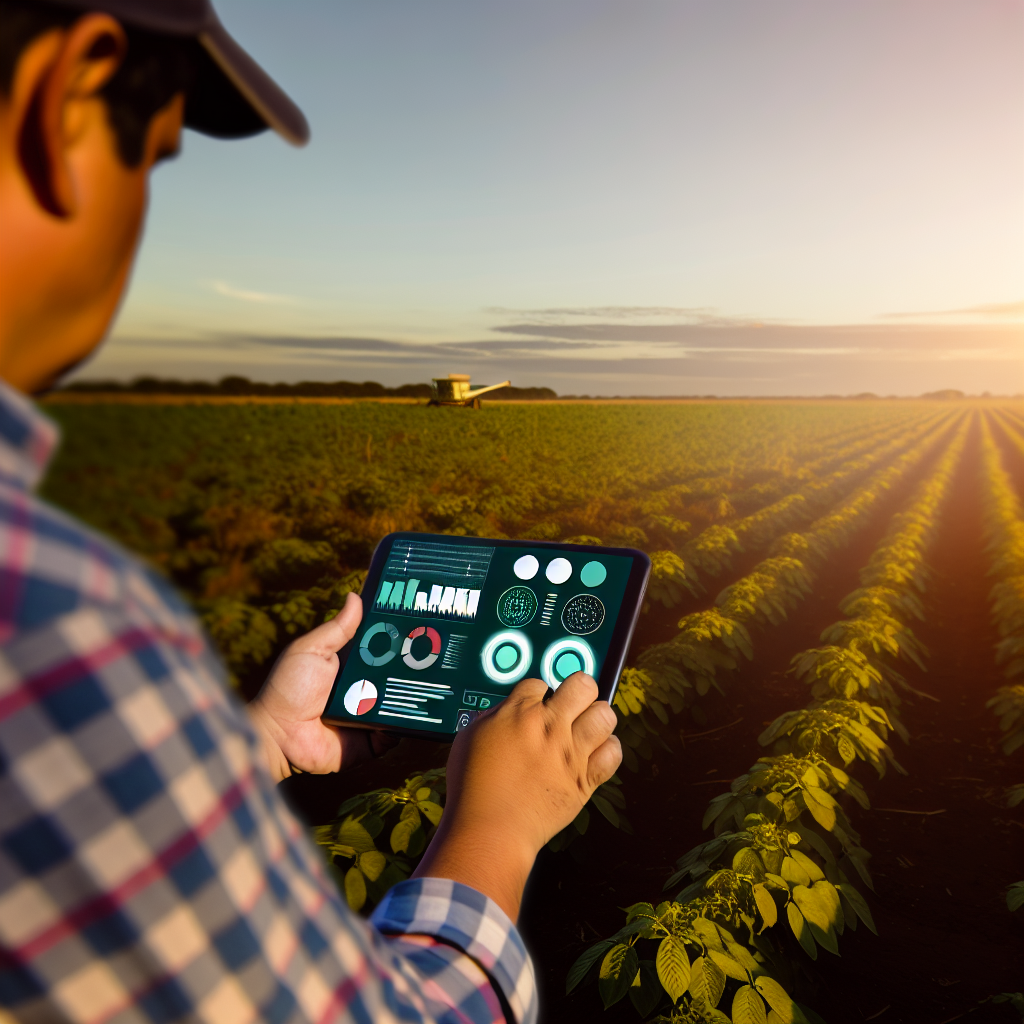
Best Practices for Data Analysis and Interpretation
Establishing Clear Goals
Begin with clear objectives for data analysis.
Define what you need to measure and why.
This will streamline your focus and efforts.
Additionally, clear goals enhance data relevance.
Utilizing Advanced Analytical Tools
Leverage modern software for data interpretation.
Tools like Python and R offer powerful analytical capabilities.
Moreover, GIS technology can visualize crop health effectively.
This visualization helps to identify patterns and trends.
Ensuring Data Integrity
Collect accurate and reliable data consistently.
Regular audits of your data collection methods are essential.
Accuracy enhances the credibility of analysis results.
Consider implementing automated data validation checks.
Integrating Multisource Data
Combine data from diverse sources for a comprehensive view.
For example, integrate weather data with crop performance metrics.
This approach provides deeper insights into crop health.
Furthermore, it allows for improved decision-making processes.
Collaborating Across Disciplines
Foster collaboration among agronomists, data scientists, and farmers.
Interaction among disciplines leads to richer insights.
Moreover, feedback loops can refine analytical approaches.
This collaboration cultivates an environment of continuous improvement.
Implementing Data-Driven Decision Making
Make decisions based on data insights rather than intuition.
This approach minimizes biases and errors in judgment.
Consequently, it enhances the effectiveness of interventions.
Regularly review outcomes to validate decision-making frameworks.
Communicating Findings Effectively
Present findings clearly to all stakeholders involved.
Showcase Your Farming Business
Publish your professional farming services profile on our blog for a one-time fee of $200 and reach a dedicated audience of farmers and agribusiness owners.
Publish Your ProfileUse graphs and dashboards to simplify complex data.
This makes insights accessible and actionable.
Tailor communication styles to diverse audience backgrounds.
Monitoring and Adjusting Strategies
Continuously monitor the effectiveness of your strategies.
Adjust based on new data or changing conditions.
This iterative process is crucial for ongoing success.
Flexibility ensures that strategies remain relevant and effective.
Gain More Insights: Choosing the Right Cover Crop for Your Farm
Case Studies: Successful Implementation of Crop Health Monitoring Systems
Introduction
This section showcases successful implementations of crop health monitoring systems.
Understanding these case studies helps identify best practices and lessons learned.
Precision Agriculture in California
GreenTech Farms in California adopted precision agriculture tools.
They implemented sensors to monitor soil moisture levels.
This approach increased crop yields by 25% within one season.
Moreover, they reduced water usage significantly.
As a result, water conservation became a priority for the farm.
Remote Sensing Technology in Brazil
Agro Solutions utilized remote sensing technology in Brazil.
They analyzed satellite imagery to assess crop health.
This method allowed them to detect pest infestations early.
Consequently, they effectively managed crop protection strategies.
The company reported a 30% reduction in pesticide use.
Mobile Application for Smallholder Farmers in India
FarmTech introduced a mobile application for smallholder farmers in India.
The app provides real-time data on crop health indicators.
Farmers utilize it to receive timely alerts about potential issues.
As a result, they have improved their decision-making processes.
This led to an increase in overall productivity by 15%.
Collaboration with Local Universities
A partnership between SkyFarm and local universities enhanced research capabilities.
Together, they developed advanced monitoring protocols.
Their collaboration resulted in valuable data for crop management strategies.
This partnership fosters innovation in crop health technologies.
Impact on Sustainability
These case studies demonstrate positive impacts on sustainability.
Each approach addresses environmental concerns effectively.
Furthermore, crop health monitoring enhances resource efficiency.
Ultimately, these systems contribute to sustainable farming practices.
Challenges in Monitoring Crop Health and How to Overcome Them
Data Collection Difficulties
Collecting accurate data on crop health can be challenging.
Weather conditions often limit access to fields.
Inconsistent data can lead to ineffective monitoring systems.
To overcome this, implement remote sensing technologies.
These technologies provide real-time data without disturbing crops.
Pest and Disease Detection
Pests and diseases can rapidly affect crop health.
Timely detection is crucial for effective management.
Showcase Your Farming Business
Publish your professional farming services profile on our blog for a one-time fee of $200 and reach a dedicated audience of farmers and agribusiness owners.
Publish Your ProfileTo address this issue, use integrated pest management practices.
Combine scouting, biological controls, and chemical treatments.
This approach ensures a holistic strategy against threats.
Resource Limitations
Many farms face budget constraints for monitoring tools.
Limited financial resources can hinder effective crop health monitoring.
Consider utilizing affordable technology options such as mobile applications.
Many apps provide valuable insights at a lower cost.
Furthermore, leveraging open-source platforms can reduce expenses.
Data Analysis Challenges
Interpreting vast amounts of data can overwhelm farmers.
Without proper analysis, valuable insights may go unnoticed.
Utilizing data analytics software can streamline this process.
These tools help identify trends and potential issues quickly.
As a result, farmers can make informed decisions promptly.
Education and Training Needs
Farmers may lack the necessary training in crop monitoring technologies.
Education is essential for effective implementation of monitoring systems.
Invest in training programs to enhance skills and knowledge.
Partner with agricultural extension services for expert guidance.
Such collaboration can boost confidence and competence in crop health monitoring.
Additional Resources
Conservation Innovation Grants Awards Fiscal Year 2023 | Natural …
Partnerships for Climate-Smart Commodities Project Summaries …

